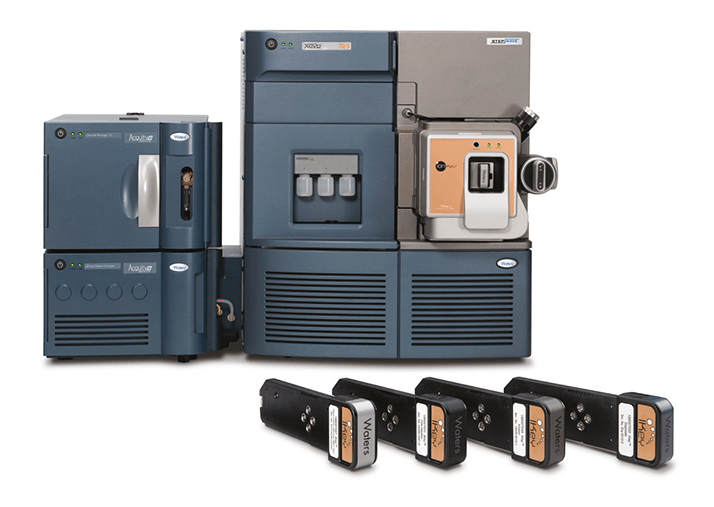Goal
To evaluate chromatographic retention time and system reproducibility of Waters® ionKey/MS™ System.

Background
Chromatographic reproducibility is an essential requirement in any analytical laboratory environment. Parameters such as chromatographic retention time (RT), peak width (PW), peak tailing, and area counts are often monitored during system suitability testing before assays can begin on any liquid chromatography system. A critical component to obtaining highly reproducible LC-MS results is the consistent performance of the separations devices utilized. Chromatographic retention time reproducibility is not only dependent on the quality and consistency in the manufacturing of the separations devices, but is also effected by gradient formation, system pressure, flow rate and temperature control.Historically, these later variables, controlled by system hardware, have been shown to be a source of poor performance and reproducibility of results for LC-MS systems that operate in the low nL-μL/min flow rate ranges.

The Solution
The ionKey/MS System, shown in Figure 1, integrates the UPLC® separation directly into the source of the mass spectrometer. The system combines the ACQUITY UPLC® M-Class and the Xevo® TQ-S Tandem Quadrupole Mass Spectrometer with the iKey™ Separation Device. The iKey consists of the ceramic-based separations channel, packed with UPLC grade particles, an integrated emitter, fluidic connections, electronics, ESI interface, heater, and e-cord. Once inserted into the source, all fluidic connections are made through the turn of a handle thereby creating a true “plug and play” capillary LC-MS instrument.





